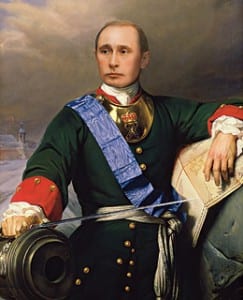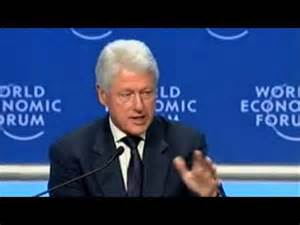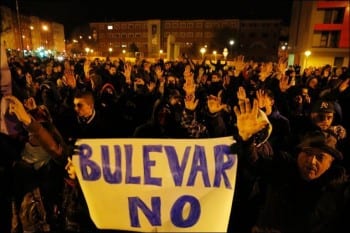OpEds: The Re-Judaizing of Israel

Putin on TIME’s cover, as Peter the Great. The idea is to mock powerful competing figures on the world stage and cast doubt on their legitimacy.
During the last hundred years, Russia has undergone huge changes.
At the beginning, it was ruled by the Czar, in an absolute monarchy with some democratic decorations, a “tyranny mitigated by inefficiency”.
After the downfall of the Czar, a liberal and equally inefficient regime ruled for a few months, when it was overthrown by the Bolshevik revolution.
The “dictatorship of the proletariat” lasted for some 73 years, which means that three generations passed through the Soviet education system. That should have been enough to absorb the values of internationalism, socialism and human dignity, as taught by Karl Marx.
Editor’s Note: We agree with Avnery in most of his points except in his characterization of Putin as a new czar, which we regard as a bit too harsh and not reflecting the narrow choices facing him as he tries to reconstruct Russian power in the face of a rapidly advancing American offensive.
The Soviet system imploded in 1991, leaving few political traces behind. After a few years of liberal anarchy under Boris Yeltsin, Vladimir Putin took over. He has proved himself to be an able statesman, making Russia into a world power again. He has also instituted a new autocratic system, clamping down on democracy and human rights.
When we view these events, spanning a century, we are obliged to conclude that after undergoing all these dramatic upheavals Russia is politically more or less where it started. The difference between the realm of Czar Nicholas II and President Putin I is minimal. The national aspirations, the general outlook, the regime and the status of human rights are more or less the same.
What does that teach us? For me it means that there is something like a national character, which does not change easily, if at all. Revolutions, wars, disasters come and go, and the basic character of a people remains as it was.
Let us take another example, closer to us geographically: Turkey.
Mustafa Kemal was a fascinating person. People who met him when, as an officer in the Ottoman army, he was serving in Palestine, described him as an interesting character and a heavy drinker. He was born in Thessaloniki in Greece, a town which was mostly Jewish at the time, and took part in the revolution of the Young Turk movement, which aimed at the renovation of the Ottoman Empire, which had become the “sick man of Europe”.
After the Turkish defeat in World War I, Mustafa Kemal set out to create a new Turkey. His reforms were very far-reaching. Among others, he abolished the Ottoman Empire and the ancient Muslim Caliphate, changed the script of the Turkish language from Arabic to Latin, pushed religion out of politics, turned the army into “the guardian of the (secular) republic”, forbade men and women to wear traditional dress like the fez and the hijab. His ambition was to turn Turkey into a modern European country.
In 1934, when the surname law was adopted, the national parliament gave him the name “Atatürk” (Father of Turks). The people adore him to this day. His picture hangs in all government offices. Yet now we witness the reversal of most of his reforms.
Turkey is today ruled by a religious Islamic party, voted in by the people. Islam is making a major comeback. After staging several coups, the army has been pushed out of politics. The present leadership is accused by some of neo-Ottoman policies.
Does this mean that Turkey is returning to where it was a hundred years ago?
One can cite examples from all over the world.
Some 220 years after the mother of all modern revolutions, the Great French Revolution, the frivolous adventures of the present French president are being compared to those of the Bourbon kings. Nothing much has remained from the times of the austere Charles de Gaulle, neither morally nor politically.
Italy has still not attained political stability, after the intermezzo of the clownish Silvio Berlusconi. A much reduced Great Britain still thinks and behaves like the empire in its heyday, striving to get away from the Europe of the Frogs and the Wogs.
And so forth.
I like to quote (again) Elias Canetti, the Nobel-prize writer claimed by Bulgaria, England and Switzerland, not to mention the Jews.
In one of his works he claims that every nation has its own character, like a human being. He even undertook to describe the character of major nations by symbols: the British are like a sea captain, the Germans are like a forest of tall, straight oaks, the Jews are formed by the exodus from Egypt and the wandering in the desert. He sees these characteristics as constant.
Professional historians may laugh at such dilettantism. However, I believe that the injection of some literary insights into history is all for the better. It deepens the understanding.
All this leads me to the Jewish-Israeli metamorphosis.
Israel was literally created by the Zionist movement. This was one of the most revolutionary of revolutions, if not the most far-reaching of all. It did not aspire to the change of a regime, like Mandela in South Africa. Nor to a profound change of society, like the Communist movements. Nor to a cultural change, like that of Atatürk. Zionism wanted to achieve all that, and much more.
It wanted to take a dispersed religious-ethnic community, born in ancient times, and turn it into a modern nation. To take masses of individuals from their homelands and natural habitat and transfer them physically to another country and another climate. To change the social status of each of them. To cause them to adopt a new language – a dead language that was brought to life again, a task no other people ever succeeded in accomplishing. To do all this in a foreign country inhabited by another people.
Of all revolutionary movements of the 20th century, Zionism was the most successful and enduring. Communism. Fascism and dozens of others came and went. Zionism endures.
But is Israeli society really Zionist, as it claims loudly and repeatedly?
Zionism was basically a rebellion against the Jewish existence in the Diaspora. In the religious sphere, it was a reformation more profound than that of Martin Luther.
All prominent Jewish Rabbis, both Hasidic as anti-Hasidic, condemned Zionism as a heresy. The People of Israel were united by their absolute obedience to God’s 613 commandments, not by any “national” bonds. God had strictly forbidden any mass return to the Land of Israel, since He had exiled the Jews for their sinful behavior. The Jewish Diaspora was thus decreed by God and had to remain, until He changes His mind.
And here came the Zionists, mostly atheists, and wanted to bring the Jews to the Land of Israel without God’s permission, indeed abolishing God altogether. They built a secular society. They held abysmal contempt for the Diaspora, especially for the Orthodox “ghetto Jews”. Their founding father, Theodor Herzl, held that after the foundation of the Jewish State, no one outside it would be considered a Jew anymore. Other Zionists were not quite so radical, but certainly thought along these lines.
When I was young, many of us went even further. We disclaimed the idea of a Jewish State, and spoke instead of a Hebrew State, connected only loosely with Diaspora Jewry, creating a new Hebrew civilization closely connected with the Arab world around us. An Asian nation, not identified with Europe and the West.
So where are we now?
Israel is re-Judaizing itself at a rapid pace. The Jewish religion is making a huge comeback. Very soon, religious children of various communities will be the majority in Israeli Jewish schools.
Organized Orthodox religion has made immense inroads. The official Israeli definition of a Jew is exclusively religious. All matters of personal status, like marriage and divorce, are ruled by the Rabbinate. So is the menu of most restaurants. Public transport, on land and in the air, is halted on the Shabbat. Non-Orthodox Jewish religious denominations, like the “Reformists” and the “Conservatives”, are practically banned.
In a scandal that is rocking Israel at the moment, revolving around a Qabalistic rabbi, is appears that this miraculous person has amassed a fortune of hundreds of millions of dollars by selling blessings and amulets. He is but one of many such rabbis who are surrounded by tycoons, cabinet ministers, senior gangsters and senior police officers.
Herzl, who promised to “keep the rabbis in their synagogues and the professional army in their barracks” is surely turning in his grave on Jerusalem’s Mount Herzl.
But these are still relatively superficial symptoms. I am thinking of much more profound matters.
One of the basic convictions of Diaspora Jewry was that “the whole world is against us”. Jews have been persecuted throughout the ages in many countries, up to the Holocaust. In the Seder ceremony on Passover eve, which unites all the Jews around the world, the holy text says that “in every generation they arise to annihilate us”.
The official aim of Zionism was to turn us into “a people like all peoples”. Does a normal people believe that everybody is out to annihilate it at all times?
It is a basic conviction of almost every Jewish Israeli that “the whole world is against us” – which is also a jolly popular song. The US is concluding an agreement with Iran? Europe turns against the settlements? Russia helps Bashar al-Assad? Anti-Semites all.
International protests against our occupation of the Palestinian territories are, of course, just another form of anti-Semitism. (The Prime Minister of Canada, who visited Israel this week and made a ridiculous speech in the Knesset, also proclaimed that any criticism of Israeli policy is a form of anti-Semitism.)
Does this mean that in Israel, the self-proclaimed Jewish State, all the old Jewish attitudes, suspicions, fears and myths are coming to the fore again? That the revolutionary Zionist concepts are disappearing? That nothing much has changed in the Jewish outlook?
As the French say: “The more things change, the more they stay the same.”
Or, as Ecclesiastes puts it in the Bible (1:9): “The thing that hath been, it is that which shall be, and that which is done is that which shall be done, and there is no new thing under the sun.”
URI AVNERY is an Israeli writer and peace activist with Gush Shalom. He is a contributor to CounterPunch’s book The Politics of Anti-Semitism.



